15 Games That Revolutionized Video Game Graphics
More than just good looking, these graphically impressive titles helped change gaming forever.
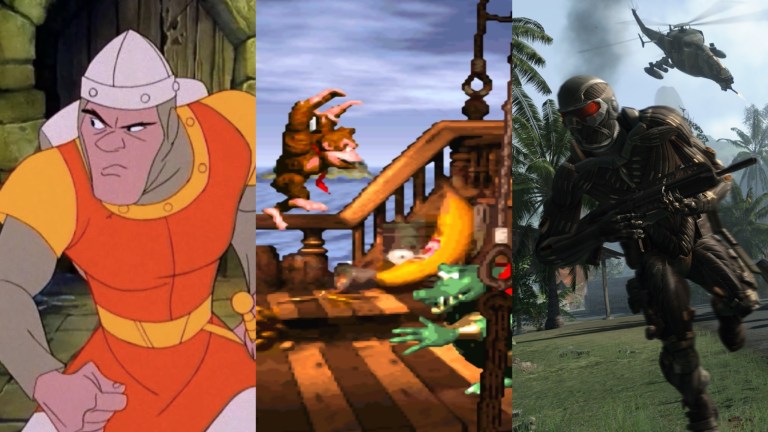
The “graphics don’t matter” argument always makes me a little sad. Though there is some truth in that stance, it is often triggered by the views of those who overvalue raw gaming visuals or otherwise believe games can’t be great if they don’t have top-of-the-line graphics. Perhaps a game doesn’t need incredible graphics to be great but incredible graphics certainly have the power to elevate or define tremendous experiences. They are a vital component of the evolution of the medium.
For as memorable as the most stunning video games often are, it can be remarkably easy to lose track of the milestone advancements that got us from Pong to Red Dead Redemption 2. While it would take more space than I have here to give all those milestone advancements their due, these are 15 of the most notable games that revolutionized video game graphics.
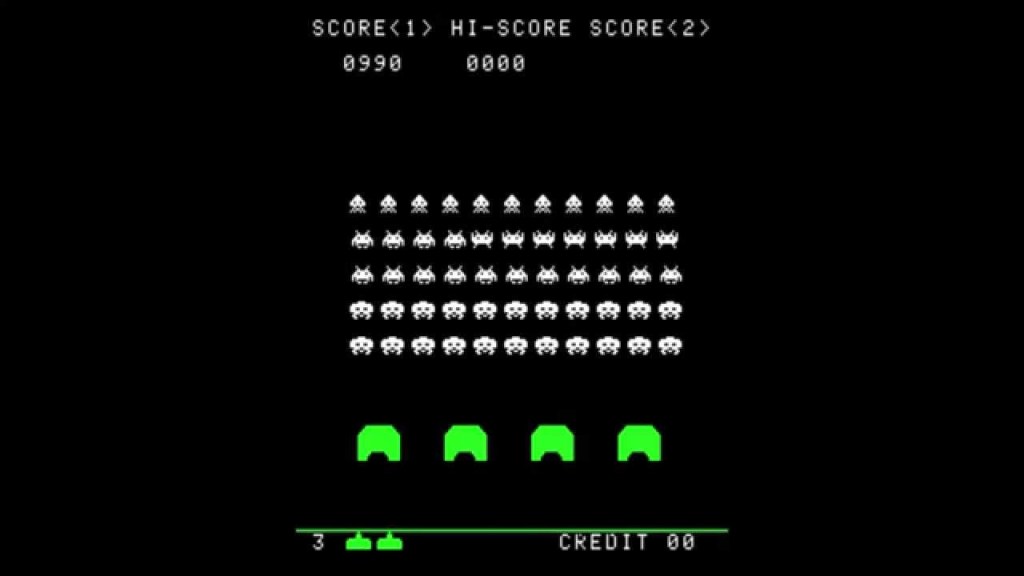
Space Invaders (1978)
This article has to start somewhere, though picking the first game to highlight turned out to be a surprisingly tough decision. Is it better to discuss one of the first games with graphics (Tennis for Two), or do you jump straight ahead to Pong? Certainly, games like Color Gatcha and Galaxian deserve love for their early uses of color.
Ultimately, it just felt right to kick things off with Space Invaders. At the very least, Space Invaders was the culmination of a series of graphical concepts that older games had only played with. Those include the game’s use of what we now consider to be pixel art and its revolutionary application of independent sprite animations. More than anything else, though, Space Invaders deserves all the credit in the world for the ways that developer Taito used those visual concepts to forever increase the intensity of the modern gaming experience.
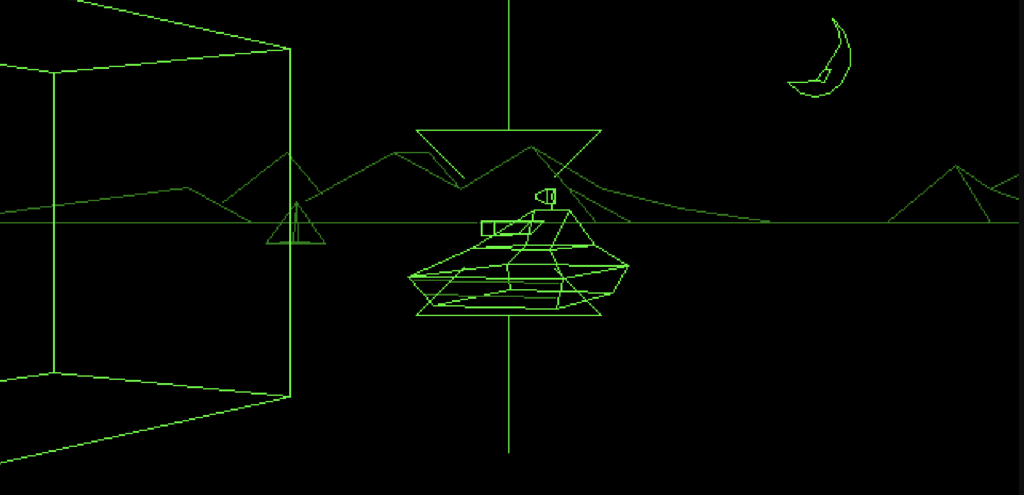
Battlezone (1980)
While Battlezone is widely considered to be the first 3D arcade game (or at least the first one that was truly successful in that area), that honor comes with a notable asterisk. Technically, Battlezone wasn’t a “true” 3D game but rather a title that used vector graphics and a first-person perspective to simulate what we may now consider to be a 3D gaming experience.
That doesn’t take anything away from Battlezone’s innovations, though. If anything it solidifies them in the eyes of history. Not only did many subsequent 3D titles utilize variations of Battlezone’s technology to produce similar effects, but many games released over a decade later were still relying on digital smoke and mirror techniques to simulate a true 3D environment. The continuing evolution of 3D visuals can be traced back to Battlezone’s technical accomplishments and the ways it showed how enjoyable and commercially viable that graphical pursuit could be.
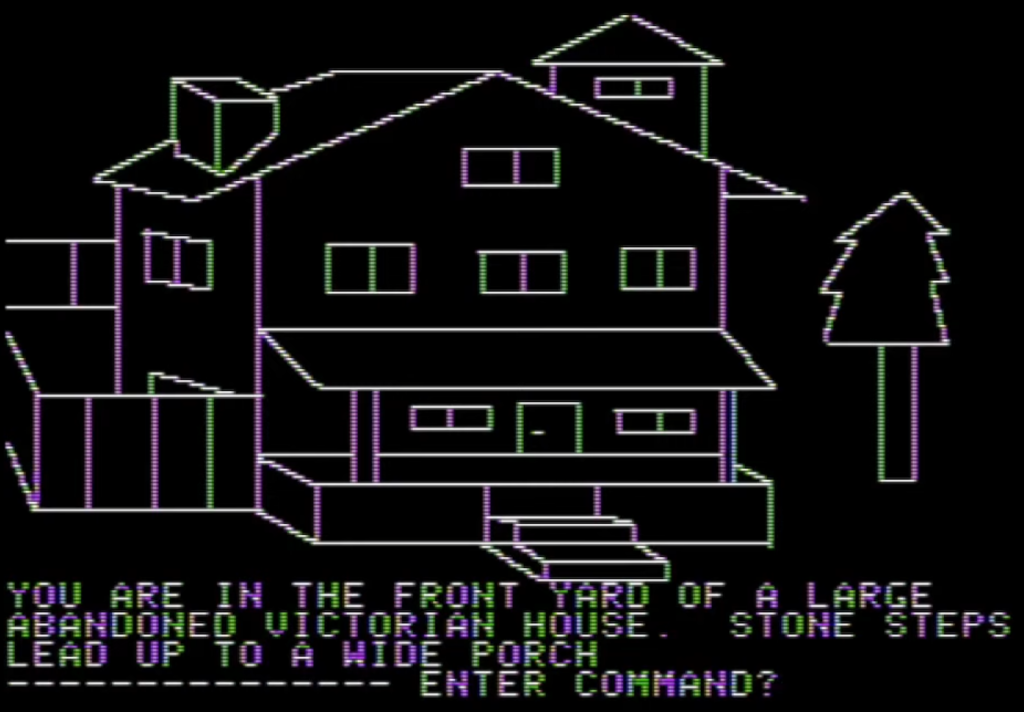
Mystery House (1980)
Mystery House was the first computer adventure game with proper graphics, which is certainly a notable historical milestone in the context of this particular topic. Text-based adventure games were among the most complex titles available at that time from a structural perspective, and Mystery House helped show that their advanced narrative and interactive possibilities could also be visually conveyed. Its release was a milestone moment in the relationship between interactivity and graphics.
What puts Mystery House over the top are the ways it emphasized both art and artists in gaming. Mystery House artist Roberta Williams’ work represented a seismic change in the relationship between art and programming that would gradually make more people aware of a video game artist’s distinct style and how it could define a gaming experience. Williams would go on to create the King’s Quest series, which further helped bridge the gap between Mystery House, the LucasArts era, and our modern views on artist-driven visuals in gaming.
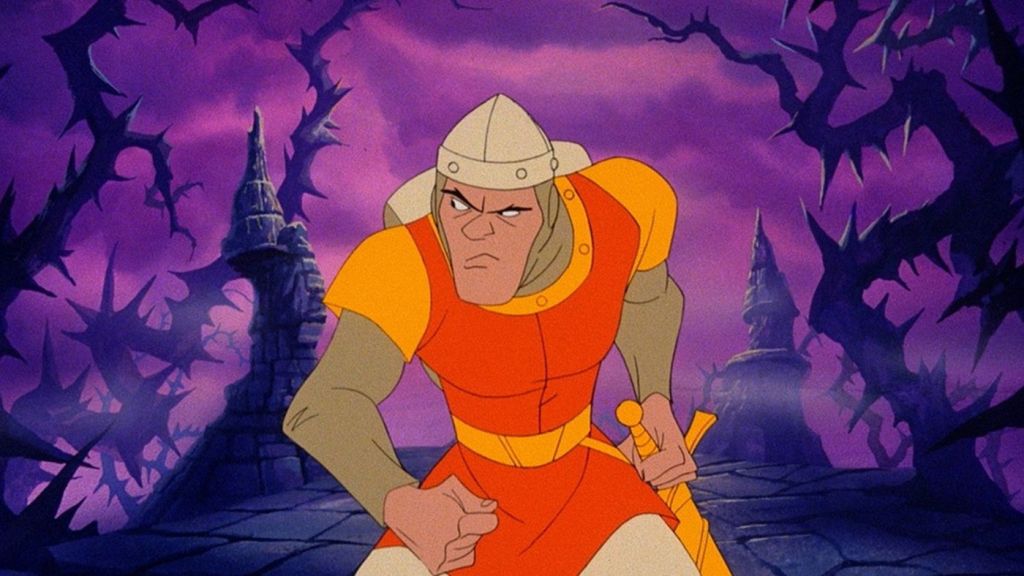
Dragon’s Lair (1983)
While this article is presented in chronological order, there’s a strong argument to be made that Dragon’s Lair should top any ranked version of this subject.
Dragon’s Lair’s use of the LaserDisc format (and a variety of other technical innovations) made it one of the first games to “draw” gamers based almost entirely on its visuals. In fact, Dragon’s Lair’s visuals made it so popular that it is often credited with helping to save the dwindling arcade industry and helping to keep gaming alive in the long run following the great console crash. Dragon’s Lair featured very little actual gameplay to speak of, but people just had to see this arcade game that looked as good as the most impressive animated film of that era.
And that’s the biggest why Dragon’s Lair belongs in this conversation. It set a new standard not just for video game visuals but for how big developers, designers, and fans dared to dream. It would be decades before more interactive games could properly replicate Dragon Age’s raw visuals or striking style.
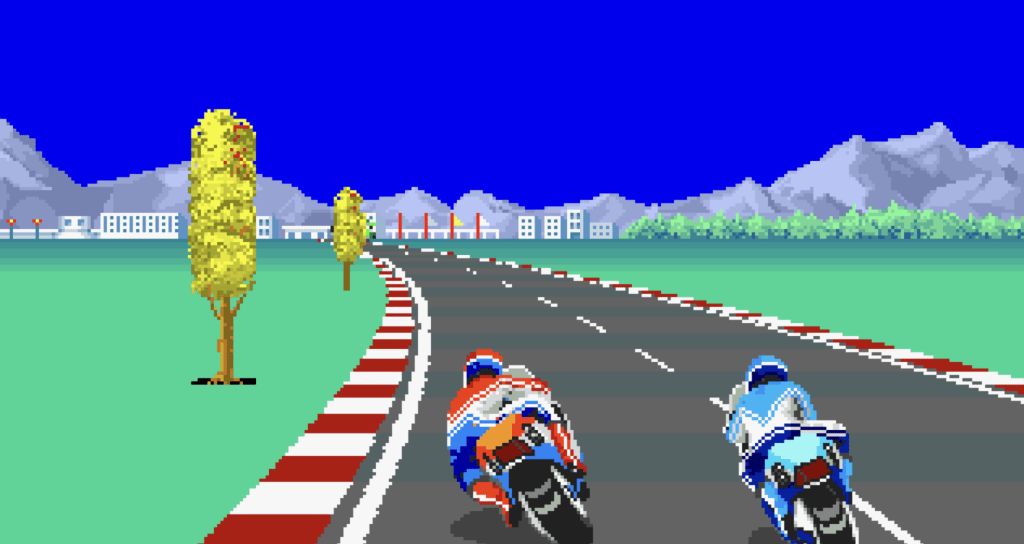
Hang-On (1985)
Hang-On is sometimes referred to as the first video game that featured 16-bit graphics, though that’s not entirely accurate. It would probably be more accurate to say that Hang-On was the first game to feature 16-bit graphics that not only looked every bit as good as that bigger number suggested they should look but ran faster than nearly everything else out there.
“Speed” really is the name of the game in this case. Hang-On not only looked better than most other arcade games of its era, but it ran faster and smoother than even many visually simpler titles. Long before things like framerate became popular talking points when discussing video game visuals, Hang-On created new expectations for speed and fluidity in gaming.

Prince of Persia (1989)
While “animation” was a concept that was discussed in gaming as far back as the ‘70s, character animations were not necessarily expected to be complicated nor were they often considered to be a visual selling point in more action-packed titles (meaning non-Dragon’s Lair kind of experiences). Those conversations certainly changed shortly after Prince of Persia’s release.
Prince of Persia utilized advanced rotoscoping techniques to give its characters more realistic (if heavily stylized) movement animations. More than just visually impressive, those movements granted even simple actions a genuine sense of impact and importance. Though it would take a little while for the rest of the industry to catch on (or perhaps just catch up), Prince of Persia’s emphasis on animation became a vital point of reference in the truly 3D era when animation quality was suddenly much more important and noticeable. To this day, animations can often be more impressive than a game’s raw visuals.
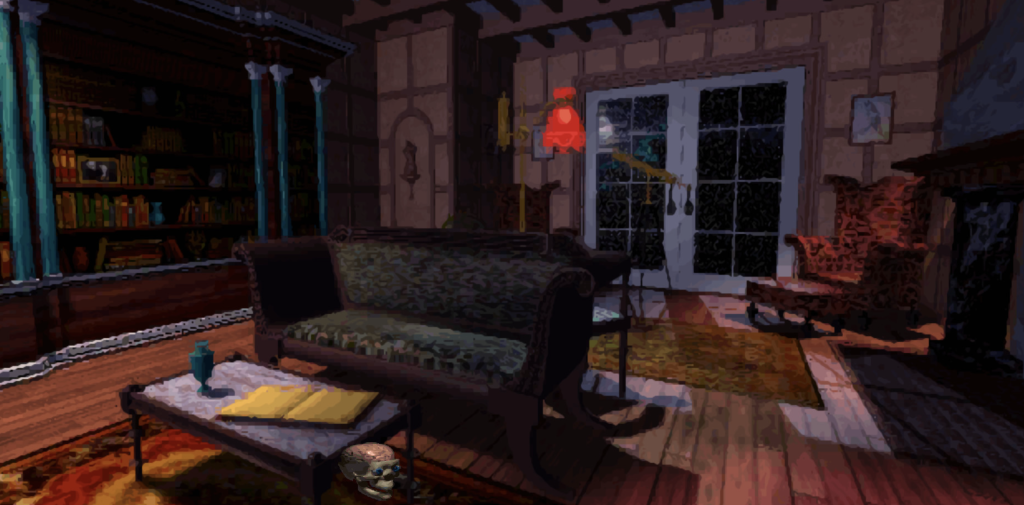
The 7th Guest (1993)
Much like Dragon’s Lair, The 7th Guest sacrificed advanced gameplay for pure visual advancements. The game is essentially an interactive movie in which you progress by solving puzzles and making simple selections. What makes The 7th Guest so very special is its reliance on gorgeous pre-rendered environments (which were a true novelty at the time) and how it projected live-action footage onto those environments. Nobody had seen anything quite like it, and those complex visual concepts required 7th Guest developer Trilobyte to base everything they did on that newfangled “CD-ROM” technology.
Indeed, while Myst (released a few months later) is widely credited for ushering in the CD-ROM era of PC gaming, The 7th Guest is the game that opened many eyes to how quickly things were changing. Relatively few people at that time even owned home computers powerful enough to properly run The 7th Guest, which means that this game also helped usher in the era of blockbuster game releases that encouraged widespread hardware upgrades.
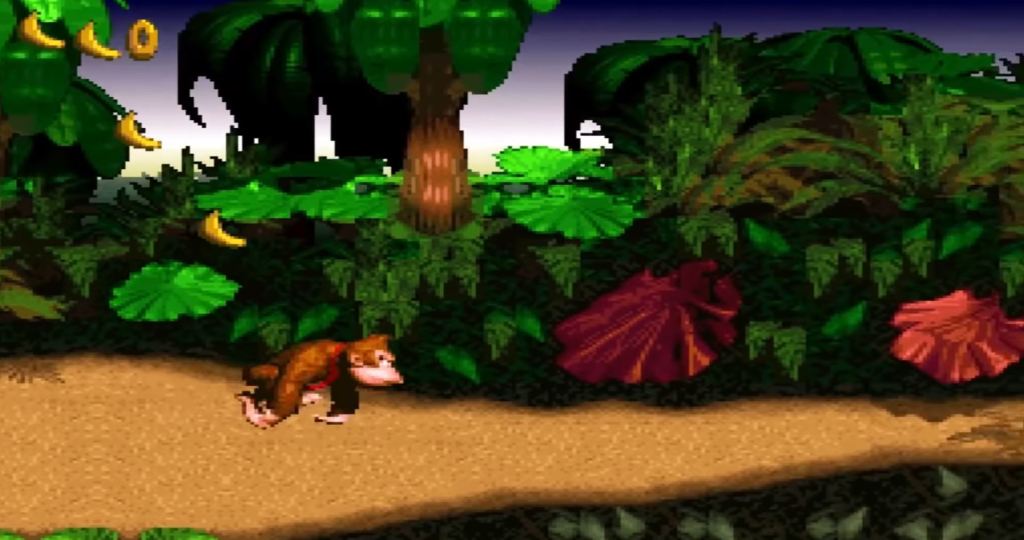
Donkey Kong Country (1994)
Except for Dragon’s Lair, no widely popular game changed the conversation about video game graphics as quickly as Donkey Kong Country.
With Donkey Kong Country, developer Rare used a fascinating combination of animations and pre-rendered visuals to create a visual style nobody had really seen before. I remember some at the time describing Donkey Kong Country as the most “realistic” game they’d ever seen from a visual perspective. That may not be the best word to use to convey what the game looks like, though the popular use of that word goes to show how the game’s potent blend of raw technology, style, and clean animations created something that gamers at the time struggled to properly describe with mere words.
Perhaps most importantly, Donkey Kong Country widely changed expectations for console graphics. Suddenly, the lowly SNES was challenging high-end PC gaming graphics. It’s the game that brought consoles into the graphical arms race formerly led by PCs and arcades.
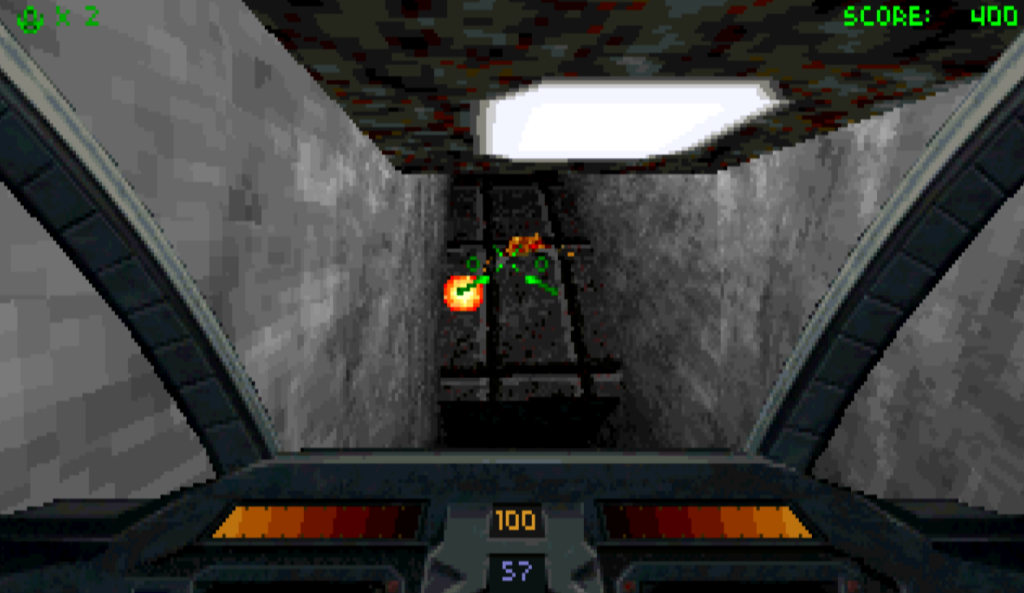
Descent (1995)
As noted earlier, the debate over what was the first game to feature “true” 3D graphics tends to rage on to this day. However, it usually ends around the mid-90s when a few indisputable candidates begin to emerge. While games like Magic Carpet and Quake deserve a lot of love in that conversation, Descent arguably represents the most significant advancement in the vital area of 3D gaming.
Descent afforded players unprecedented freedom of movement in fully rendered 3D environments. Unlike Doom (which still relied on 2.5D techniques for its 3D environments), Descent offered a full 3D gaming experience in the modern sense of the word. It sometimes even did so to its detriment. Its gameplay was fairly simple even for its time, and Descent notoriously caused many gamers to experience motion sickness for the first time. If nothing else, that goes to show how revolutionary it was.

Trespasser (1998)
Trespasser is the worst game on this list by some distance. Widely panned upon its release, this strange sequel to The Lost World: Jurassic Park is a fundamentally broken game that was way too ambitious for its own good.
Even still, it’s impossible to not be impressed with not just the things this game accomplished but the things its developers even bothered to think of trying to do in the late ’90s. For instance, Trespasser is considered to be the first game to feature a proper physics system. If that wasn’t enough, it also rendered lush, large, and detailed outdoor environments in ways that wouldn’t be regularly replicated for a very long time. This game is a noted influence on other games that could have easily appeared on this list such as Half-Life 2, Doom 3, and Far Cry.
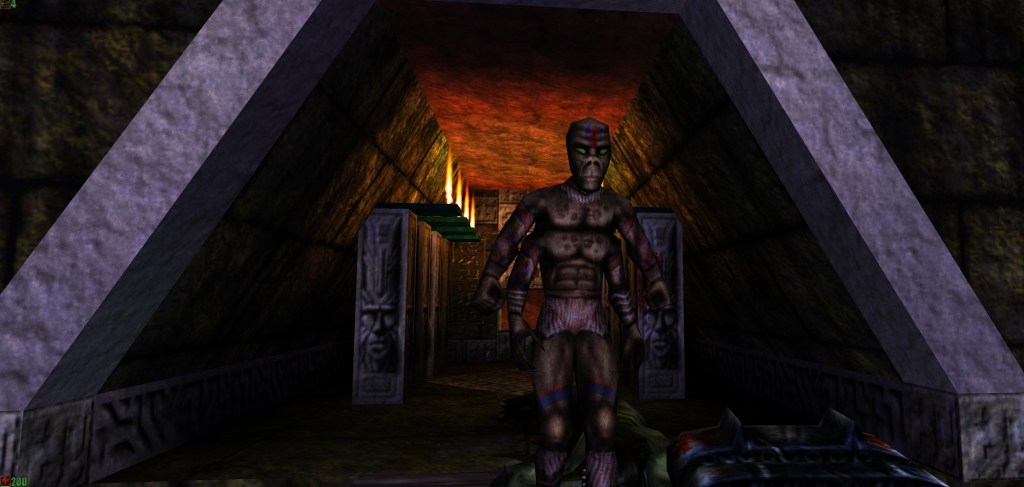
Unreal (1998)
When many gamers hear the name “Unreal,” they likely either think of Unreal Tournament or the Unreal Engine that has powered multiple generations of visually advanced games.
While the influence of the Unreal Engine may be reason enough for Unreal to earn a spot in this breakdown, you also can’t overstate just how visually impressive the original Unreal game was and, in many ways, still is. In the early days of true 3D gaming, Unreal featured the kind of highly detailed 3D environments that seemed impossible to achieve just months before the game’s release. It was a landmark moment in the evolution of video game textures that rightfully made the word “unreal” synonymous with great gaming graphics.

Soul Calibur (1999)
While it seems like a quaint concept these days, there was a time when many console gamers dreamed of “arcade-perfect” titles. For decades, gamers had to accept that dedicated arcade machines could produce visuals that home consoles simply could not replicate. Even early “arcade perfect” ports were usually only found on wildly expensive consoles or were otherwise limited to 2D arcade titles ported to home consoles in the 3D era.
Soul Calibur changed all of that. It was not only an arcade-perfect port of an advanced 3D title but a port that often looked and ran better than its arcade equivalent. It’s fascinating to see how the biggest Dreamcast launch title pretty much ended the arcade-perfect era and kicked off an all-too-brief run of Dreamcast games exploring entirely new concepts for console titles.
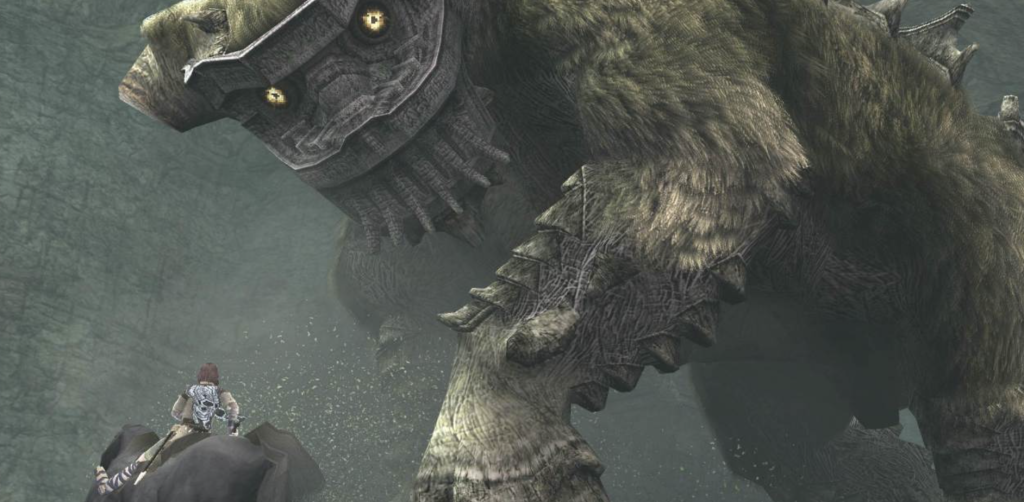
Shadow of the Colossus (2005)
For as much as we’d all like to believe that the “games are art” conversation is an outdated debate, it still pops up from time to time when someone decides to try to be inflammatory. In 2005, many gamers genuinely believed that the recently released Shadow of the Colossus would end that debate forever.
Shadow of the Colossus combined advanced technical techniques, a unique artistic vision, and interwoven narrative concepts to create a game that stopped people in their tracks for reasons that we hadn’t quite seen before. Yes, the game was a pure looker, but the ways that Shadow of the Colossus used those stunning raw visuals to bring a complete artistic vision to life opened up a new avenue for discussing the true power of video game graphics. Even notorious “games are art” critic Roger Ebert was forced to concede that it was pretty impressive.
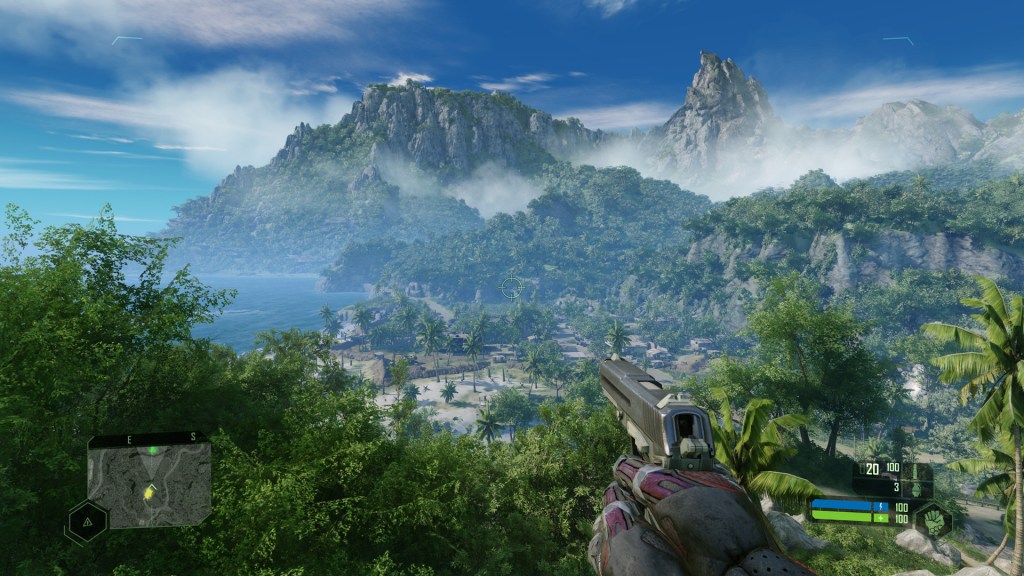
Crysis (2007)
“Can it run Crysis?” may be one of the most effective and appropriate memes in the history of gaming. Then again, it’s also not really the joke it is sometimes presented as. To this day, some gamers still use Crysis to test the capabilities of their new gaming PCs.
At the time of its release, Crysis’ lighting, environmental details, and draw distance capabilities were so advanced that even the highest-end gaming PCs available at the time could struggle to convey its full potential. For that matter, future Crysis games had to dial back on some of this title’s more advanced features to ensure more PC gamers could play them. Some of the best-looking modern games can be traced back to Crysis in terms of both the specific techniques they use and how Crysis changed what many believe great modern gaming graphics should look like.
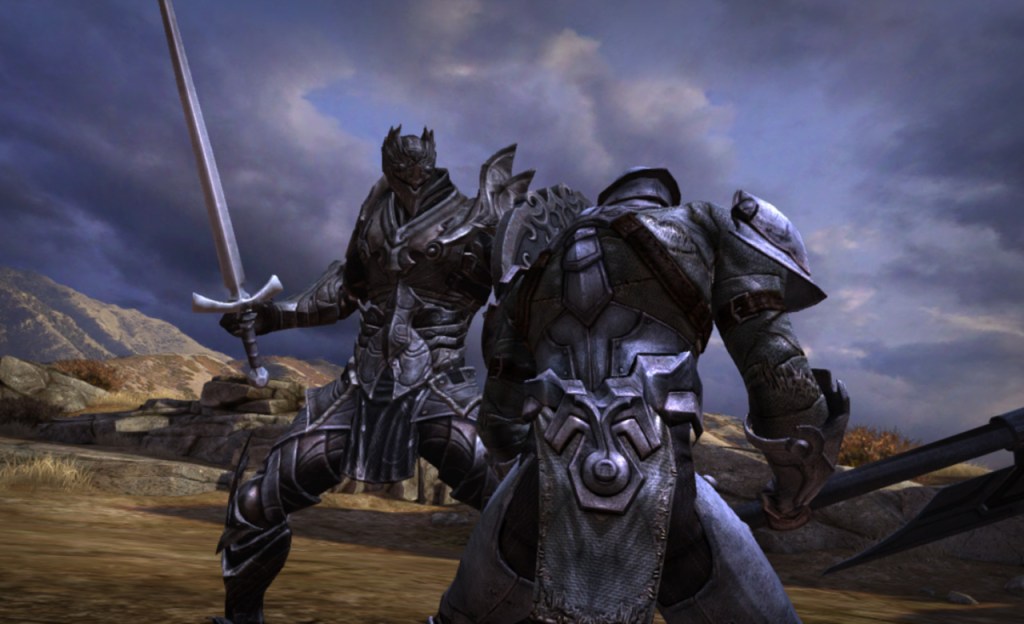
Infinity Blade (2010)
In their earliest days, mobile phone games were widely considered to be little more than novelties designed to occasionally kill time. Even more advanced mobile titles usually came and went without much notice. While many suspected the iPhone would help change that dynamic, it certainly didn’t do so right away. Years after the iPhone’s debut, Apple was still looking for that mainstream killer app game that would showcase the full potential of their hardware and the mobile medium
They found it in Epic Games and Chair Entertainment’s Infinity Blade. By utilizing a modified version of Unreal Engine 3, Infinity Blade’s developers were able to produce a game that looked nearly as good as some of the major console titles available at that time. While Infinity Blade was criticized for its relatively simple gameplay (a running theme among many of these titles), its impact was immediate and considerable. Infinity Blade helped usher in the era of mobile devices being viewed as primary gaming platforms.
